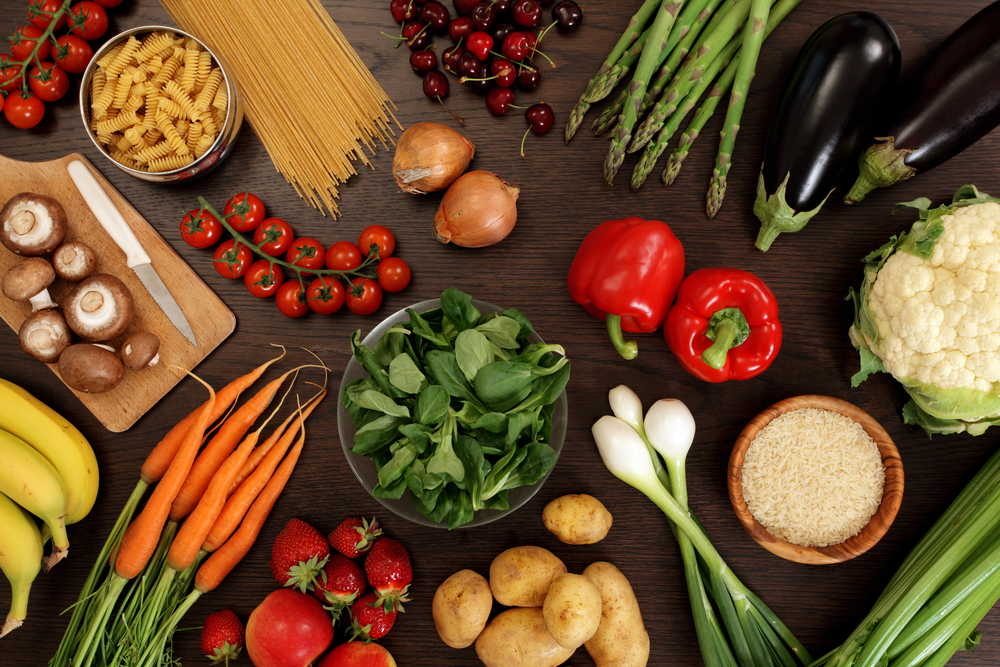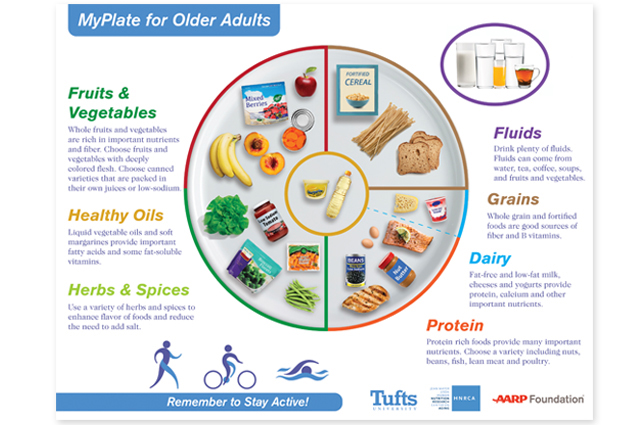When planning menus for seniors, nutritious foods and beverages form the basis of any facility’s program. Healthy eating plans can help improve symptoms or decrease the risk of chronic conditions like diabetes, heart disease and high blood pressure.

Older adults often have specific nutritional needs but the healthy eating plan recommendations in the Dietary Guidelines for Americans published by the Department of Health and Human Services (HHS) provide a sound foundation for senior menus.
Fruit and Vegetable Recommendations for Senior Menus
Adults age 50 or older need to consume sufficient produce every day, according to the My Plate guidelines. At mealtime, about half the plate should be filled with a variety of colorful fruits and vegetables.
Across an entire day, seniors should eat between 1 ½ to 2 ½ cups of fruit and 2 to 3 ½ cups of vegetables.
Fresh, seasonal produce is delicious, but fruits and veggies in all forms offer demonstrated health benefits. Frozen, dried and canned varieties are nutritious (albeit less so than fresh) and can be used in countless recipes for snacks and meals for seniors.

Whole Grains Guidelines for Senior Menus
The HHS recommends that older adults eat 5 to 10 ounces of whole grains per day. Grains should fill about one-fourth of the plate at mealtime.
Whole grains such as oats, brown rice, barley and couscous are rich with dietary fiber and offer a host of benefits, including smoother digestion and a reduced risk of many serious health problems.
Refined grains are stripped of many of their valuable nutrients. So, whenever possible, senior menus should incorporate whole grains instead of refined varieties.
Dairy and Protein-Rich Foods and Dairy Menus for Seniors
The remaining space on mealtime plates for seniors should be filled with protein-packed foods – poultry, lean meats, fish, beans, eggs, tofu, seeds or nuts – and fat-free or low-fat dairy products. Yogurt and cheese are popular dairy options for senior menus.
Over the course of the day, senior menus should also include 5 to 7 ounces of protein. As for dairy foods, the HHS says seniors should consume a total of 3 cups.
What about healthy beverages? The best options are water, tea and coffee. Milk is a good choice as well, and it counts toward the dairy requirement for the day.
Avoid empty calories whenever possible, as well as foods and beverages that are high in calorie count but low in nutrients. Chips, cookies, crackers, soda and other processed foods should be saved for the occasional treat.
Planning for proper nutrition is easy with the Grove Menus program. Our efficient, user-friendly meal planning software system helps adult care facilities meet the health needs of senior residents. To learn more or to schedule a free demonstration, contact us today.
